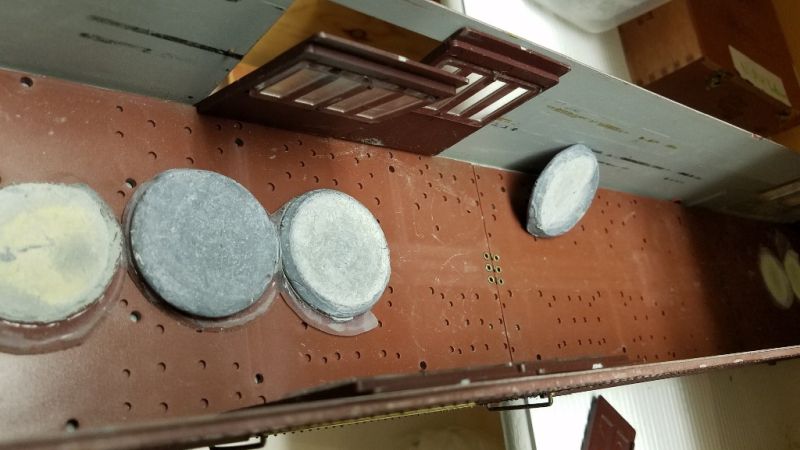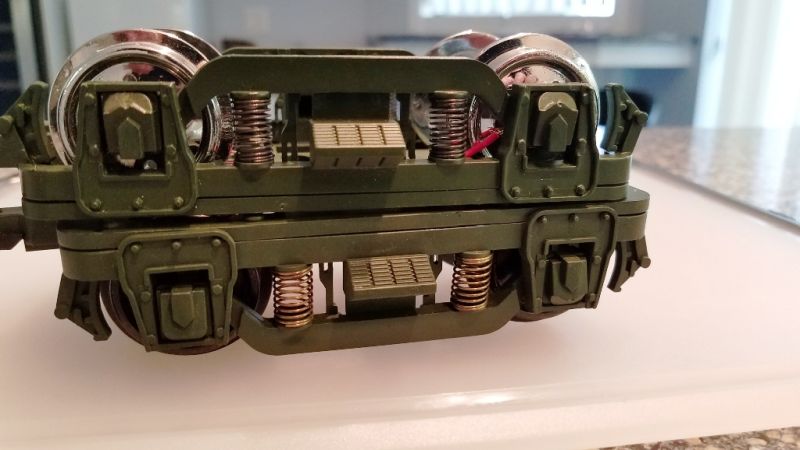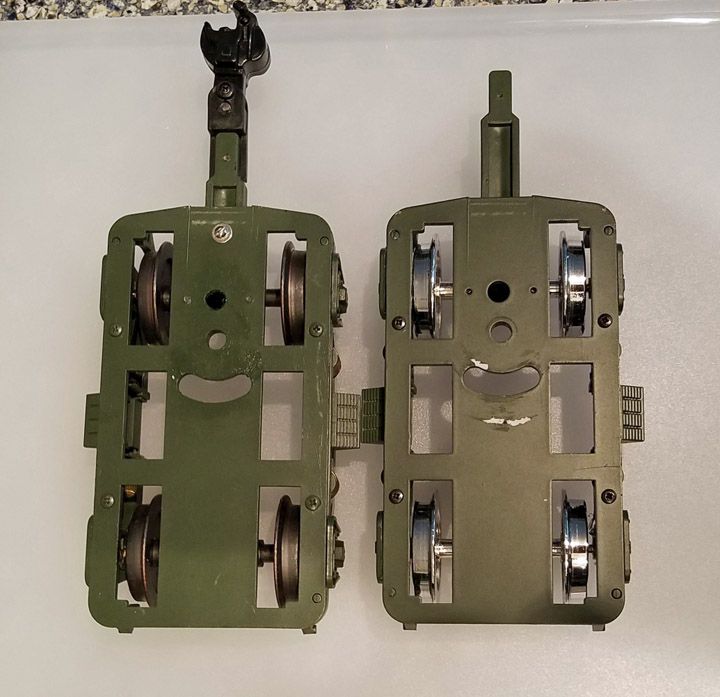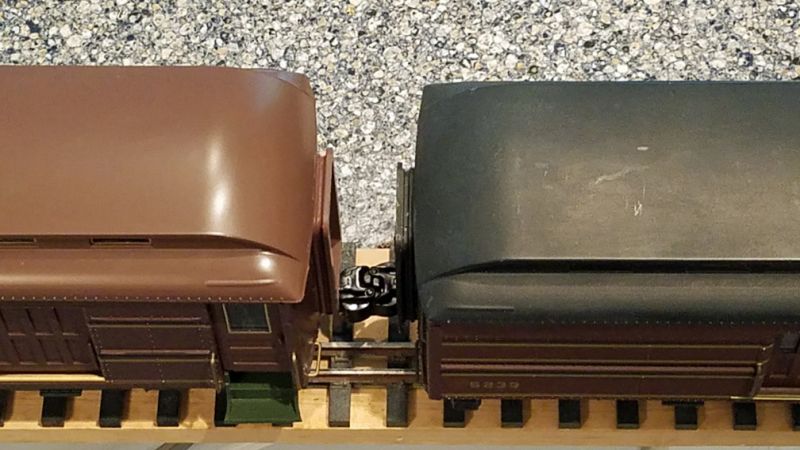Guys, I picked up a set of 4 Aristo PRR Heavyweights to accompany my AML K4 Pacific, and I also grabbed a PRR baggage/RPO when it was offered, as I figured that they were few and far between.
Which raised a whole bunch of questions.
- When did Aristo switch from blue/grey end-load boxes to yellow top lift boxes? Or vice versa - which came first? I thought it was the blue/grey ones were older?
The baggage/RPO arrived with a horrible rarttle inside, which looked like a load of circular weights. I got the top off and found them all rolling around - see below.

- Is there any reason to weight these cars? This is my second or third batch of heavyweights, and I never saw a need for more weight.
The trucks are interesting. I have a combine that came as part of the set of 4, but although it is in an old blue/grey box, it has blackened wheels and brass springs. (bottom truck in the photo below All the others, including the latest baggage/RPO in the yellow box, have shiny wheels and black springs.

- Is there any practical difference in the two types of trucks?
Any and all comments appreciated.



